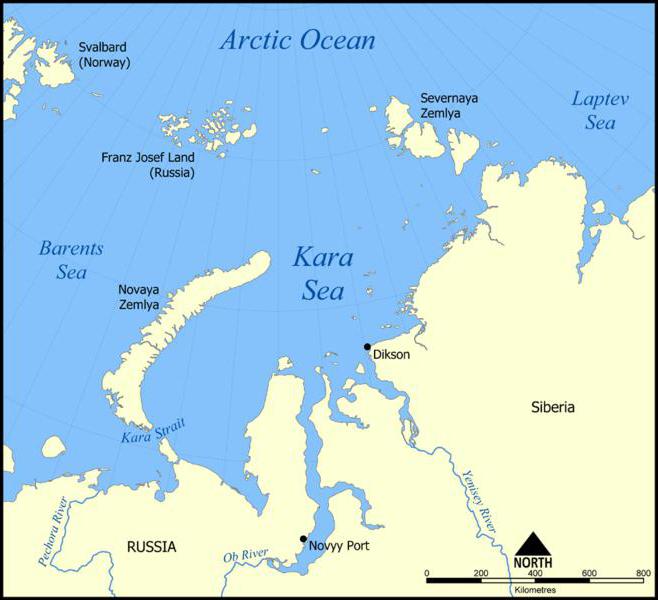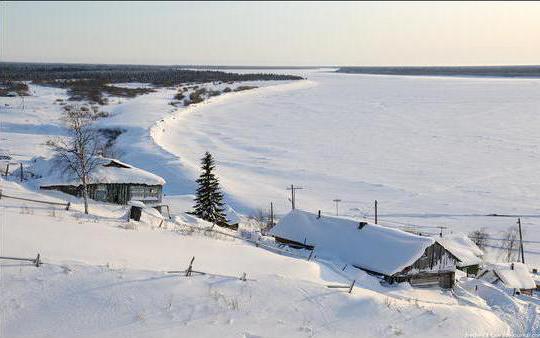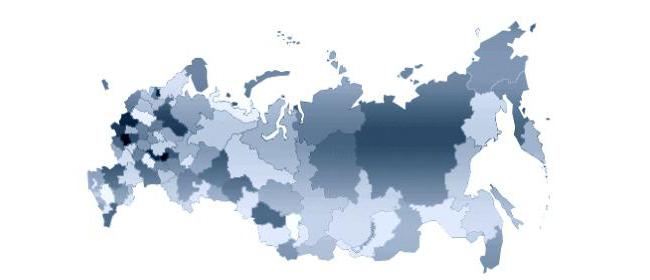Residents of many regions of the Russian Federation receive salaries and pensions calculated using the northern coefficients and allowances, as a result of which the corresponding payments can significantly exceed the size of those that characterize the activities of citizens, for example, in central Russia or in the south of the country. What are the conditions for receiving these compensations? What is the difference between northern premiums and odds?

What is the essence and purpose of the northern allowances and coefficients?
Under the considered surcharges, it is customary to understand the monetary compensation established for the remuneration of citizens working in the Far North, as well as in equivalent territories. The corresponding types of financial support are regulated by the provisions of the Tax Code of the Russian Federation, regulatory sources adopted back in the USSR, as well as by-laws of the Government of the Russian Federation.
Along with the northern coefficients, in order to increase the incomes of citizens working in cold climates, district allowances are also applied. In many cases, those and other surcharges are charged simultaneously. If you go a little deeper into history, you can pay attention to the fact that the northern coefficients and allowances were established by the legislation of the USSR in the 70s in order to attract young and qualified specialists to the North, to a large extent undeveloped territories.

It is noteworthy that so far in the Russian Federation a single source of law has not been adopted, which would regulate how the northern coefficients and allowances should be calculated and paid. The main regulatory acts on the basis of which the corresponding surcharges are assigned are those adopted in the USSR.
Difference between odds and allowances
Before considering the nature of such compensation as the northern coefficient, how it is calculated, it will be useful to study its main differences from the premiums. What are they?
First of all, it is worth noting that the northern allowance is understood as the amount calculated in percentage terms of a person’s salary. It is guaranteed by law only if a person has sufficient experience. Just to come to the North or to another place where there are allowances, and to start working there is not enough. A certain time must pass. Further in the article we will study in more detail what are the requirements for seniority in terms of the possibility of receiving northern allowances.
District coefficient in the North, it is calculated in whole or in tenths of a number — the salary of a person is multiplied by it. This surcharge, in turn, is guaranteed by law for any length of service - just start working in the North. It can be noted that district coefficients are established not only for the northern territories, but also for other regions that are characterized by a difficult climate. Further in the article we will also study the specifics of the respective compensations in more detail.
In some cases, the northern coefficients and allowances are regulated by regional regulatory enactments, as well as local norms applicable in specific organizations. The type of financial support under consideration is intended to compensate the residents of the North of the Russian Federation for difficult working conditions from the climate point of view, which in many cases require greater productivity, effort and cause an increased burden on the body of a working person.
We noted above that in the USSR, coefficients and allowances were established in order to attract qualified specialists to the development of the North.Today, the purpose of the corresponding surcharges, in principle, remains the same. But there is also a point of view according to which a citizen receiving northern coefficients and allowances can spend them on a more balanced diet, and also use them to organize trips to health resorts in the south and other regions or abroad - during the vacation period.
Conditions for calculating premiums and odds
We will study a number of important nuances that determine the conditions for calculating the considered allowances and coefficients. First of all, it should be noted that the northern coefficient is calculated at the place of the actual location of the company in which the person works. Where the employer is legally located does not matter.
So, it is quite possible that the head office of the company is located in the Middle lane - in this case, its employees will not receive allowances, while employees of units located in the North are entitled to rely on appropriate compensation. If a person works in regions where the northern coefficient is accrued, and those where this preference is not provided, alternately - payments are calculated in proportion to the time the employee spent in a particular locality.
The corresponding coefficient is charged on the entire amount of a person’s salary, as well as other allowances and due bonuses - for example, for having a class, rank, length of service, gaining access to state secrets, special working conditions.

The northern coefficient should, as we noted above, be distinguished from the allowance that accrues to a person for work in difficult climatic conditions. Their main feature is that they are calculated taking into account the experience of the employee. Moreover, the calculation of the district coefficient may not matter.
The procedure for calculating seniority in regions of the Russian Federation with difficult climatic conditions is governed by the provisions of the Order of the Ministry of Labor of the RSFSR adopted on 11/21/1990, as well as the decree of the Russian government published on 10/7/1993. In addition, these normative legal acts can be supplemented by other sources of law explaining certain nuances of regulating the accrual of northern allowances.
In accordance with the legislation of the Russian Federation, allowances supplementing the northern coefficient for wages are divided into several main categories.
Firstly, these are compensations accrued in areas belonging to the Far North, mainly in the Far Eastern part of the Russian Federation. That is, paid to citizens who work in Chukotka, in the Koryak Autonomous Region, in some areas of the Kamchatka Region. Their value can be up to 100% of a person’s salary. The maximum size of the corresponding allowance is achieved if a person works in the region where this compensation is charged for 6 months or more.
Secondly, there are allowances in areas of the Far North that are not related to the Far East. They assume the accrual of compensation in the amount of up to 60% of the person’s salary - provided that they work for 6 months, as well as payments of up to 80% of the salary, provided that the person will work in the corresponding region for another 2 years.
Thirdly, there are surcharges supplementing the northern coefficient paid in the territories equated to the districts that belong to the Far North. Their maximum value is 50% of a person’s salary, provided that he works in the corresponding region for 5 years. At the same time, the employee's salary increases by 10% according to the results of the first year of work, and also by 10% after the following years, until the amount of compensation reaches 50%.
Note that if the employee is up to 30 years old, then the bonus in question is paid to him immediately after starting work in the region, equated to the Far North.An employee who has lived in the relevant area for more than 1 year is entitled to receive a 100% bonus after 2 years of work in the Far North, located in the Far East, or 80% after 3.5 years of work in the European and Siberian Far North.
Allocation Allocation
If a person moves from one place of work to another, then the accounting department of his new employer may need to recalculate his allowance. It is carried out in accordance with the following rules.
First of all, it is necessary to determine from which region a person moves and where. For example, if he starts working in a company in the territory, which is equivalent to the Far North, while he previously worked in the Far North, then the premium is calculated based on 10% for every 12 months that a person worked until relocation.
The specific region in which a citizen begins his career, as well as the subject of the Russian Federation from which he moved, can also be significant. For example, if his company was located in the Far East, in Buryatia or Khakassia, and he moved to the Far North or territories equivalent to it, then the existing allowance is retained by the employee.

If at the time of the change of work the allowance was less than 30% of the maximum, then the time of work upon accrual of 1 or 2 compensation is recalculated as corresponding to the year of work in the south of the Far East, Buryatia and Khakassia with 3 months of work in the Far North or 6 in the territories equated to it.
Extra leave as a social preference
It will be useful to consider another social preference, which can complement the northern coefficient and premiums. It is about providing additional leave to employees. The Labor Code of the Russian Federation generally establishes a 28-day compensated vacation. Citizens working in the Far North have the right to apply for an additional vacation of 24 days. In total, in this way, they will be able to rest 52 days a year. If a person works in territories that are equated to the Far North, then he has the right to count on 16 days of additional leave.
Warranties and Compensation
There are a number of guarantees and compensations that are provided to citizens along with support measures such as the northern coefficient of wages and allowances. Namely:
- payment of travel to settlements outside the workplace in order to receive medical care;
- providing an additional day off every month - for parents who have children under the age of 16;
- abridged work week - for women;
- pay severance pay upon reduction states or liquidation of the company;
- provision of housing subsidies to citizens - if a person needs to obtain housing and his status meets the requirements established by the legislation of the Russian Federation;
- privileges in calculating a pension, implying the possibility for citizens to receive it when they reach an age that is lower than the one that is set for residents of the Midland and the south of the Russian Federation.
Note that a person who goes on a business trip to the Far North or locality that is equated to him, the periods of stay there are counted in his seniority, which is taken into account when calculating the pension.
Distinctive features of district coefficients
So, we studied the specifics of social guarantees that complement the northern coefficient for the regions of Russia, which are characterized by difficult climatic conditions. Let us now consider in more detail the features, in fact, of district payments.
As in the case of premiums, the payment of the northern coefficient is carried out if the person works in a company located in the Far North and regions, which are equated to him. The legislation of the Russian Federation establishes coefficients ranging from 1.1 to 2. Their specific size depends on the region of the Russian Federation.

The application of the northern coefficient is carried out regardless of the fact of accruing allowances to the person, which, as we noted above, are paid subject to a sufficient length of service. The duration of labor activity, therefore, in this case has no practical value. The salary of a person is also not important - the coefficient in question should be used in calculating it in any case.
It should be noted that along with the northern coefficient itself, there are surcharges established for citizens working in difficult weather conditions in other harsh climatic zones - not necessarily those where it is cold, but where there are significant changes in temperature and atmospheric pressure, strong winds, storms. The actual size of the considered surcharge depends on how difficult the working conditions of a person are for the weather.
As we noted above, the northern coefficients for the regions of the Russian Federation can be represented in values from 1.1 to 2. One of the largest indicators is set in Chukotka - 2. Smaller - in the northern part of the Khanty-Mansiysk Autonomous Okrug, namely 1.5. The salary increased by the corresponding indicator is very important to calculate correctly. The northern coefficient for a particular region is determined by law, and the accounting of the employing company is required to apply only the applicable law. If there are errors in calculating the salary using the indicator in question, the company may have to compensate for this with penalties and fines.
It is worth noting that the size of the northern coefficient also depends on the specific sector of the economy in which the person works.
Features of the calculation of coefficients and allowances
Consider a number of practical nuances of calculating the payments in question. In the general case, the calculation of the northern coefficients and allowances, although the former are formally independent from the others, is carried out simultaneously - but on the condition that the status of a working citizen implies the receipt of appropriate preferences. Odds and allowances are charged on the entire amount of a person’s earnings, which may consist of:
- salary;
- premiums;
- corporate allowances;
- Payments for length of service;
- compensation for overtime at work;
- downtime compensation.
Even if the contract between the employee and the employer states that the coefficients and allowances do not apply to any of the components of the salary, such a condition is illegal. The employee, if desired, can challenge such a contract in court. The fact is that the provisions of local regulations cannot worsen the employee’s working conditions, which are regulated by federal law. If the company violates this requirement, then it may be fined.
Northern experience and pension
It will be useful to study in more detail how the fact of a person’s work in the North affects the calculation of his pension. As we noted above, this is expressed primarily in the fact that a citizen receives the right to retire before reaching the usual retirement age. In addition, the basic component of the pension is increasing.
In accordance with the legislation of the Russian Federation, seniority in the Far North is defined as equal to 1 year in 9 months. If a person has worked in the corresponding region of the Russian Federation for 6 years and 7 months, then during each of the following years the term of his retirement from work approaches 4 months. In total, a citizen must work in the North for 15 years to obtain the right to a pension.

Is the northern coefficient directly calculated for retirement? In accordance with the provisions of the Federal Law No. 173 adopted on December 17, 2001, the corresponding surcharge is added to the fixed part of the insurance pension for citizens who live in the Far North and territories equivalent to it. At the same time, the insurance pension does not increase for those citizens who receive other district coefficients not determined by work in the North.But the corresponding payments are taken into account when calculating the immediate amount of the pension. In this case, they affect the amount of actual earnings, and, accordingly, deductions from it in the FIU.
It is worth noting that the northern coefficient for pensioners may also increase payments due to the provisions of government decree No. 249. The norms of this NPA regulate the conditions for calculating the premium for an insurance pension based on the citizen's area of residence. So, the government prescribes to consider the need to apply the coefficient to payments only on condition that a person receives a pension at the place of registration, which corresponds to the territory of the Far North or equivalent localities.

That is, if a citizen who has been granted an increased pension taking into account the northern coefficient moves to the middle lane or to the south of Russia, then the FIU in the respective regions can legally reduce its payments. At the same time, a citizen is obliged to inform the FIU of his move from one region to another. If it turns out that the Pension Fund overpaid the pension based on the fact that it was calculated using the northern coefficients, while the person lived in the subject of the Russian Federation in the middle lane or south during the period of its receipt, the fund may initiate the recovery of the corresponding funds.
Summary
So, we examined the specifics of such a payment as the northern coefficient, how it is calculated, and also studied the features of the supplement supplementing it in many cases. An important nuance of calculating surcharges in question is that they are formally independent, although they are appointed, in principle, because of the work of a person in the same conditions - in areas with a harsh climate.
In what cases is a northern coefficient calculated for a citizen? The calculation of this surcharge is carried out regardless of the length of service of a person in the North - it is enough to simply start work in conditions with a difficult climate. The magnitude of this compensation varies between different regions of the Russian Federation. What is the northern coefficient - the maximum? The legislation of the Russian Federation establishes its limit value of 2. In some regions, it is significantly less - 1.1.
Northern allowances, in turn, are accrued only if a person has a certain length of service. Their size also depends on the region. As a rule, the largest allowances are characteristic of regions with the coldest climates. For example, for Chukotka, the Yamal-Nenets Autonomous Okrug. In territories equated to the Far North, the amount of premiums is significantly lower.
Sufficiently long work experience in a harsh climate gives a citizen the opportunity to retire earlier than if he had carried out activities in the middle zone of the Russian Federation or in the south of the state. Moreover, northern coefficients and allowances can affect the actual size of the pension, both from the point of view of the formation of its size during the periods when a person works, and in terms of its size directly upon payment.






